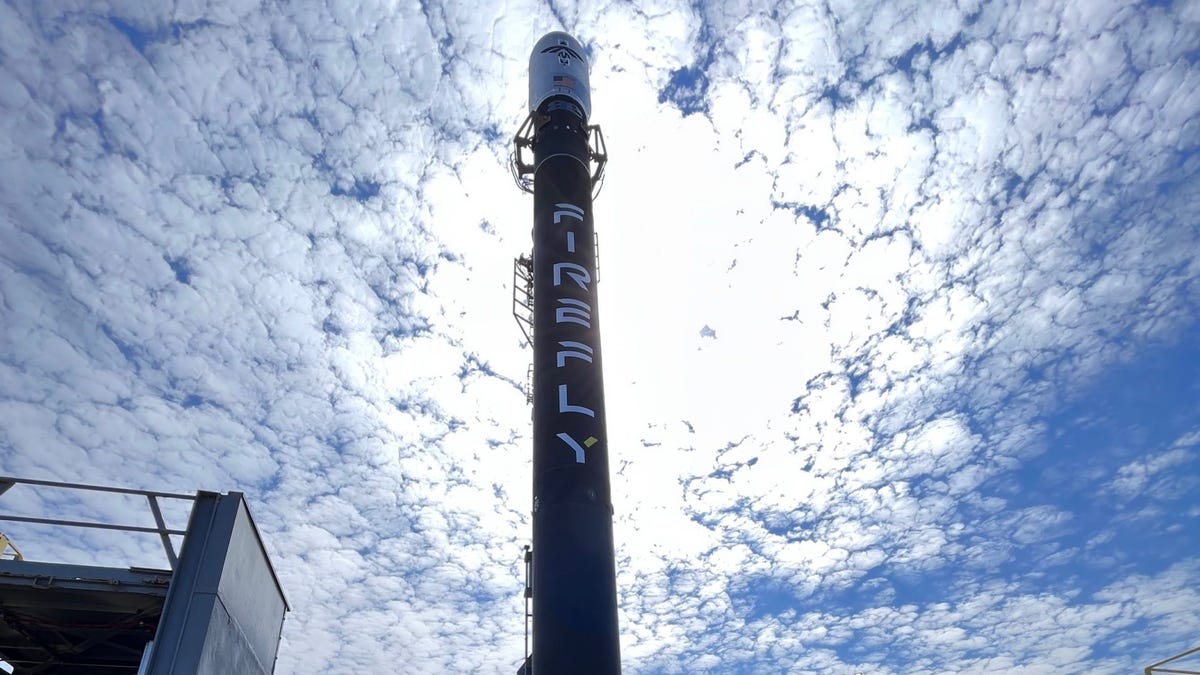Firefly Alpha Rocket Finally Makes It to Orbit
Thirteen months after the space startup's first attempt ended in an explosion, it has declared "100% mission success" for Saturday's launch.

Firefly Alpha on the pad ahead of a planned launch.
Firefly Aerospace's long journey to orbit has finally been realized, but the company hopes its longer trajectory deeper into space is just getting started.
Firefly took a big leap forward early Saturday in its quest to follow in the footsteps of SpaceX and Rocket Lab by launching its Alpha rocket with a number of small satellites on board from Vandenberg Space Force Base along the coast of central California.
The maiden voyage of its first commercial rocket went off flawlessly, blasting off at 12:01 a.m. PT, reaching orbit a short time later and successfully deploying its three payloads.
"The Firefly team set out to develop the best small launch vehicle in the world. Mission accomplished," Firefly founder and chief technology advisor Tom Markusic said in a statement.
Congratulations to the men and women of Space Launch Delta 30 and Firefly Aerospace!
— Vandenberg Space Force Base (@SLDelta30) October 1, 2022
The rocket launched from Vandenberg's Space Launch Complex-2 at 12:01 a.m., Oct. 1, 2022.
If you missed it, here is a video of the launch.#AATS #TotheBlack #PartnersinSpace pic.twitter.com/eWoy9ZtFGt
Alpha is a small- to medium-size rocket, with twice the payload capacity of Rocket Lab's Electron, but still a fraction of the capacity of bigger rockets like the SpaceX Falcon 9 that can boost large telecommunications satellites to higher orbits. Alpha isn't a reusable rocket like Falcon 9 at this point. Its first-stage booster was disposed in the Pacific.
The first Firefly Alpha launch on Sept. 2, 2021 ended in a fireball linked to a premature engine shutdown on the rocket. When the rocket began to veer off course after the engine shutdown, the US Space Force activated the onboard flight termination system, blowing up the rocket over the Pacific Ocean to ensure the safety of people and property on the ground.
This second try was originally set for Sept. 11, 2022, but an unexpected drop in pressure in the fuel system caused the launch to be scrubbed and rescheduled for the following day. It was then scrubbed again due to high winds, and further weather concerns moved the earliest possible launch date to last Friday. However, when the countdown to liftoff reached zero just before 1 a.m. PT Friday, the vehicle's Reaver engines only fired for a brief moment due to a technical issue that triggered an automatic launch abort. The issue was quickly resolved in time for Alpha to finally get off the ground less than 24 hours later.
This mission, nicknamed "To the Black," saw Firefly send two cubesats to low-Earth orbit, as well as a "picosat" deployer that released a half dozen other even smaller telecommunications satellites.
This flight has been a long time in the making. Texas-based Firefly has been around in one form or another since as far back as 2014 and went through a bankruptcy along the way. In reemerging from bankruptcy, it reformed itself in 2017 to compete with the likes of Rocket Lab and Astra for businesses launching small satellites.
Firefly has bigger plans for its future that include a lunar lander and a so-called "space utility vehicle" meant to move payloads between orbits and even to the moon and beyond.

